12 Best Ways to Mount an Action Camera to Your Body in 2025
![]()
Capturing the right angle while focusing on not being injured while grabbing some air is probably the toughest thing about using an action camera. Sure, there are selfie sticks, or simply just holding the camera, but all too often they get in the way more than they help accurately frame that selfie from a third-person perspective.
Table of Contents
1. The Classic Helmet Mount
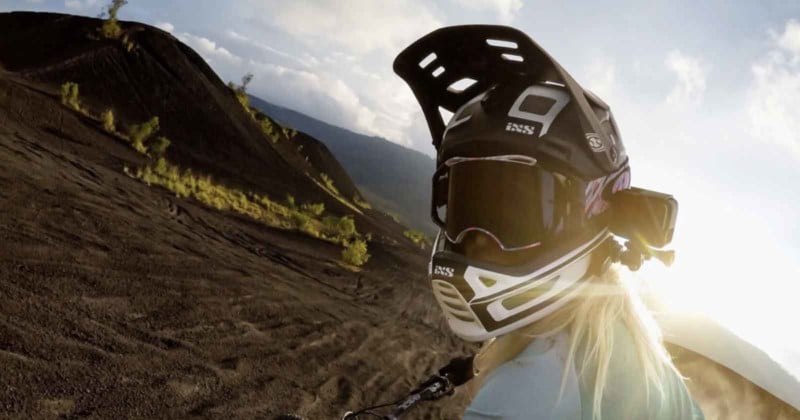
Even though helmet mounts have been around since Nick Woodman was selling GoPro cameras out of the trunk of his car, there’s a reason why they are still popular. They work. And since most action geeks are wearing a dome anyway, a good helmet mount will keep the camera from getting in the way, while the user can concentrate on getting the best run worth the effort.
The helmet mount usually comes in two forms, a straight mounted adhesive and a curved model that more closely form fits the curvature of the helmet. The straight mount is actually better suited to mounting a camera to a flat surface, so go with the curved helmet model for a more secure fit.
2. The Hat Mount
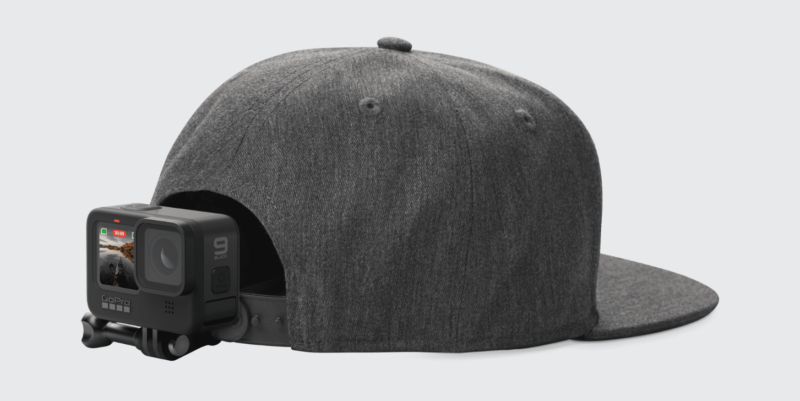
If a lover of hats, there’s also a clip-on hat mount (called a Quick-Clip) which will keep the camera at eye level, but make it easier to remove by simply sliding the mount off the bill of the hat.
3. The Head Strap Mount
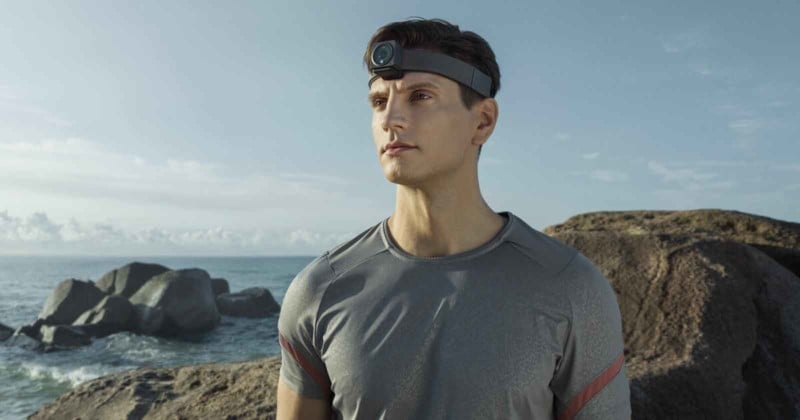
An elastic head strap mount is an option for those times when a helmet or hat isn’t preferred or necessary. But the elastic can be uncomfortable around the area where the hard plastic camera mount is placed, especially when adjusted to be tight fitting. And after crashing, it can be a guaranteed headache. Still, it works.
4. The Mask Mount
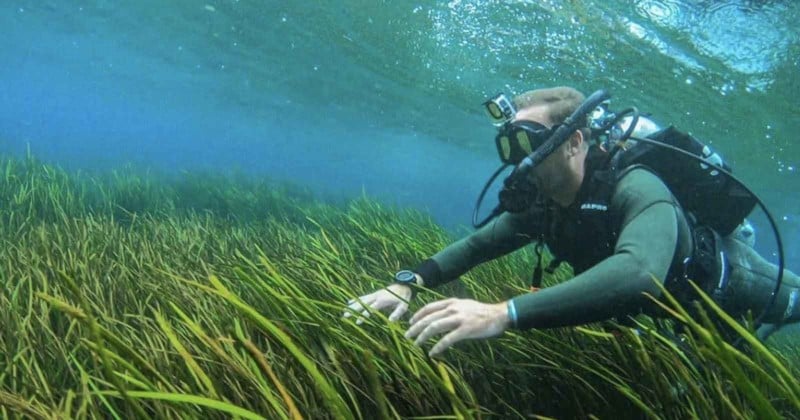
Very similar to the Headstrap, the mask mount is popular with scuba divers looking to mount a camera for a first-person POV. One of the most popular is the OctoMask, where the design places the mount at the top center of the scuba mask.
5. The Bite Mount
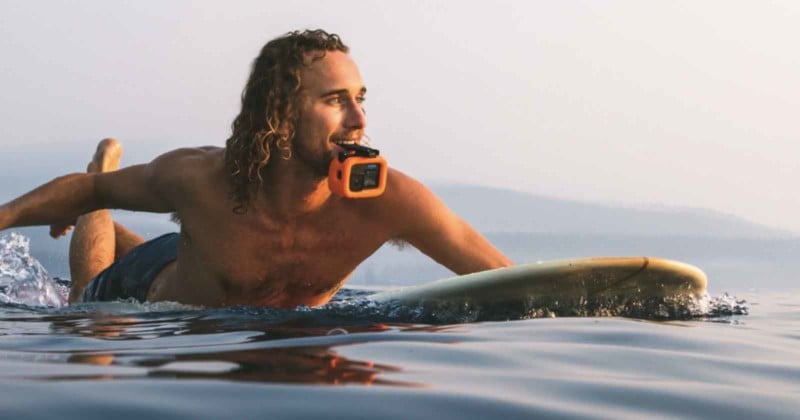
Second only to the helmet mount for grabbing a true first-person point of view is the bite mount. The mount was developed as a way to put the camera in the mouth and bite down to hold it firmly in place. The Bite Mount has been popular with surfers and skydivers since its inception, and when in the water, there’s a floaty attachment that can make the camera float after the surfer wipes out in a large wave as it breaks. Although when wiping out, chances are looking around for the camera will take some time to locate it. But at least with a gel mount guard to bite down on, there’s little risk of damaging a tooth.
6. The Chest Mount
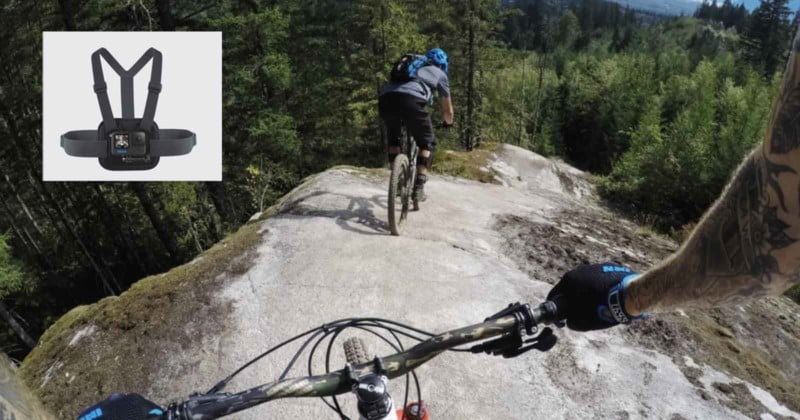
Known as “The Chesty,” a chest mount is a bit more involved, as the athlete has to wear an elastic harness around their torso, which will house the action camera on the chest. This will work, but it is a lower angle than the first person point of view, and the camera doesn’t exactly point perfectly forward when snowboarding side-footed. The chest mount may also be obscured by arms or additional harnesses. A parachute harness, for instance, makes the chest mount a poor choice than say, a backpack mount.
The chest mount can also be restrictive, although some come with a pad that makes the hard plastic portion of the mount at least a little more comfortable to wear.
7. The Shoulder Mount
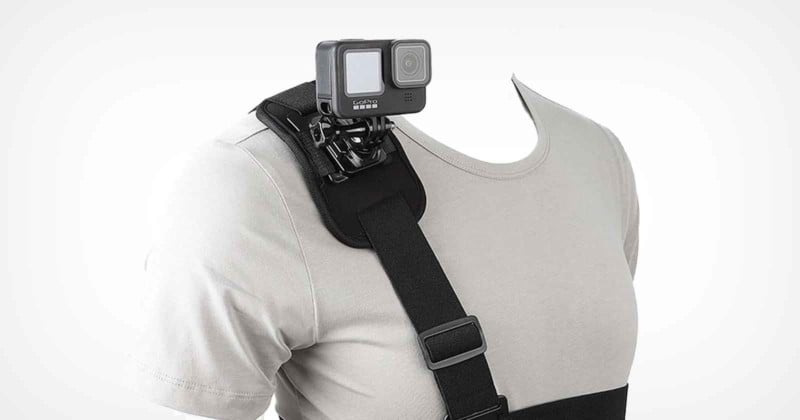
A better option than the chest mount is the shoulder mount. Similar in design to the chest mount with a torso strapping harness, the camera mount is located on the shoulder, keeping it pointed wherever the shoulder faces. Again, snowboarders aren’t likely going to use this often, but a biker sure would. The downside is that it’s just as constricting as the chest mount.
9. The Backpack Mount
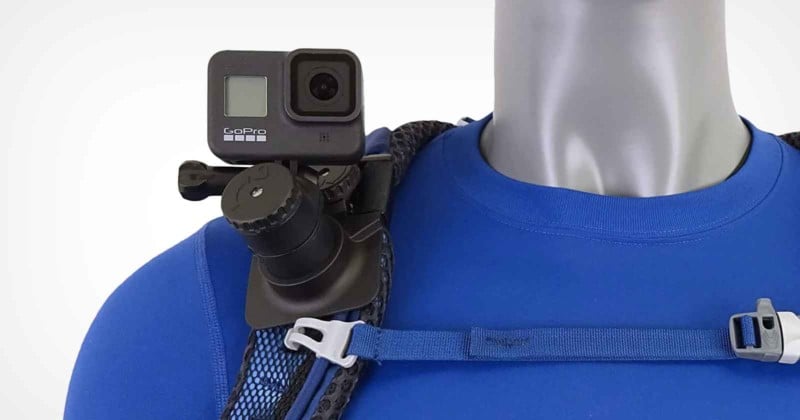
There’s also a backpack mount that works similar to the shoulder mount, only it’s attached to the strap of a backpack. This is similar to the chest mount but is a better option because the backpack mount is usually easier to remove without having to take the harness off. The backpack option also means not having a tightly strapped harness around the torso which could be constricting while seeking a tail grab.
10. The Wrist (or Hand) Mount
![]()
The wrist mount is interesting for a variety of reasons, chief of which is its point and shoot. Wherever the hand points, that’s where the camera goes. Wrist mounts also have a 360-degree rotating platform, so not only can the hand direct the camera, but with a quick turn, it becomes a selfie camera as well. This also makes it ideal for skydivers looking to capture that selfie from a natural position while plummeting.
11. The Finger Grip Mount
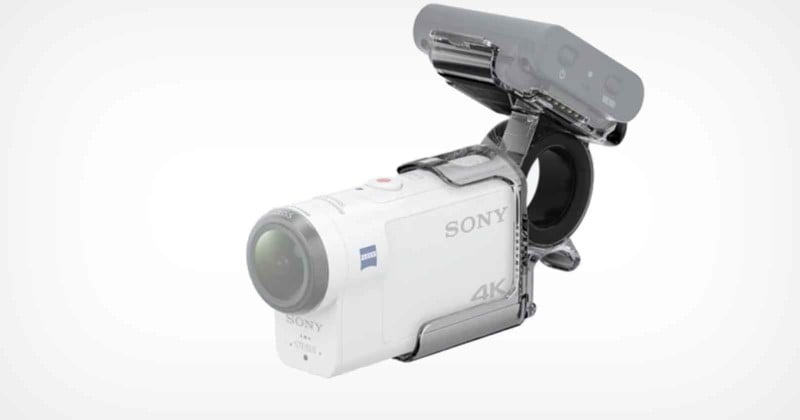
A finger grip mount is very similar in design to pulling the trigger of a firearm, only instead, the finger is holding the camera. With a circular grip that also has a supporting half-round clip, the finger grip mount enables for pointing the camera anywhere, secure in the knowledge that the camera won’t slip out of one’s hand, or slip away from where it’s pointed. The finger grip usually has an articulation range of about 120°, too, for some fine-tuning of the angle. The only downside is that the finger grip only works with the Sony line of action cameras, but it can also come with an optional LCD screen.
12. The Magnetic Mount
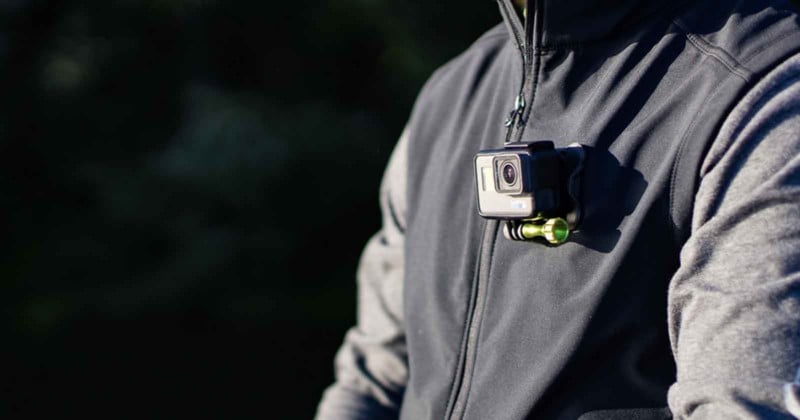
Not really ideal for action-oriented extreme applications, but if the goal is to capture a relaxing day at the lake or a park setting, then the magnetic mount is a good choice. Consisting of two magnetic plates, the magnetic mount can adhere to just about anything from clothing to a bag, or even a ball cap. The dual magnetic design also makes it secure, although it’s unlikely the lightweight action camera will weigh things down much.
With so many options for mounting an action camera to your body, there are unlimited angles for capturing the moment, especially from a first-person point of view. And as time goes on, there’s certain to be a mount coming that will keep the action camera secure, no matter where on the body it ends up.
Image credits: Header photo by Voorpreth Lam.